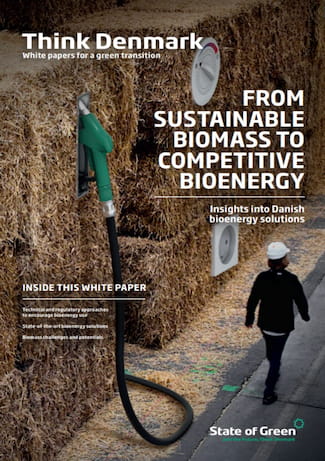Download our publication on bioenergy today
This article is part of our publication ‘Bioenergy’.
Download nowPerspective
Biogas
Biomass
District energy


The concept merges several energy supply objectives in a holistic system concept, where the synergy between the individual solutions is used with great effectiveness by utilising the energy and resource streams between the individual plants.
The Maabjerg Energy Concept envisions a comprehensive, sustainable energy solution, based on local and CO2 neutral raw materials, using the latest biorefining technologies. The concept satisfies several aims: it produces heat and electricity through a biomass fuelled CHP plant and biogas from local household waste. In 2016 it is expected to start construction of the third part for the production of second generation bioethanol transport fuel from straw and other agricultural residues.
Maabjerg Energy Concept combines social, environmental and economical sustainability. Key to the concept is bringing together specific technologies in a holistic system concept, and utilising the synergies gained between the individual solutions to develop strong biobased platform. The total investment budget for the entire Maabjerg Energy Concept is about EUR 360 million and was by the EU Commission awarded EUR 39 million in funding from the
NER300 programme for the future production of second generation bioethanol.
The upcoming bioethanol plant will use DONG Energy’s Inbicon technology to produce 80 million litres 2G bioethanol based on 300,000 tonnes of straw. The products from the bioethanol production, which consists of lignin biofuel and vinasse, is used for energy production. The lignin is used to produce steam and electricity in the existing cogeneration plant, and the vinasse is used as raw material for biogas production, while the leftover from
the biogas production can go back to the fields as fertiliser.
The biogas plant, which is already in operation, processes up to 800.000 tons of biomass yearly, of which about 500,000 tons are liquid and solid manure, supplied by the local farming community. Along with manure, the plant co-digests wastewater sludge, dairy waste and food waste, producing 20 million Nm3 biogas for use in district heating and electricity generation, as well as digestate for use as fertilizer and fibres. When 2G bioethanol production begins, the biogas production volume is expected to increase to a total of 50 million Nm3 biogas annually. The surplus of biogas will be upgraded to sustainable natural gas and distributed, stored and sold through the existing natural gas network. The energy in the fibre from the biogas
plant and the lignin from the ethanol production is designed so that the nutrients in the fibre and lignin are collected and recycled. In particular, using the phosphorus is essential, since this component has a large and global significance.
The combined system is dimensioned so that the local heating market can use the whole heating load from the plant, without energy being lost to additional cooling. The district heating grid acts as a cooling medium for the steam required to produce ethanol, so the extent of the ethanol production and the amount of raw materials is based on the district heating system’s base load.

This article is part of our publication ‘Bioenergy’.
Download nowsolutions
Combined heat and power production
+6
publications
Combined heat and power production
+9